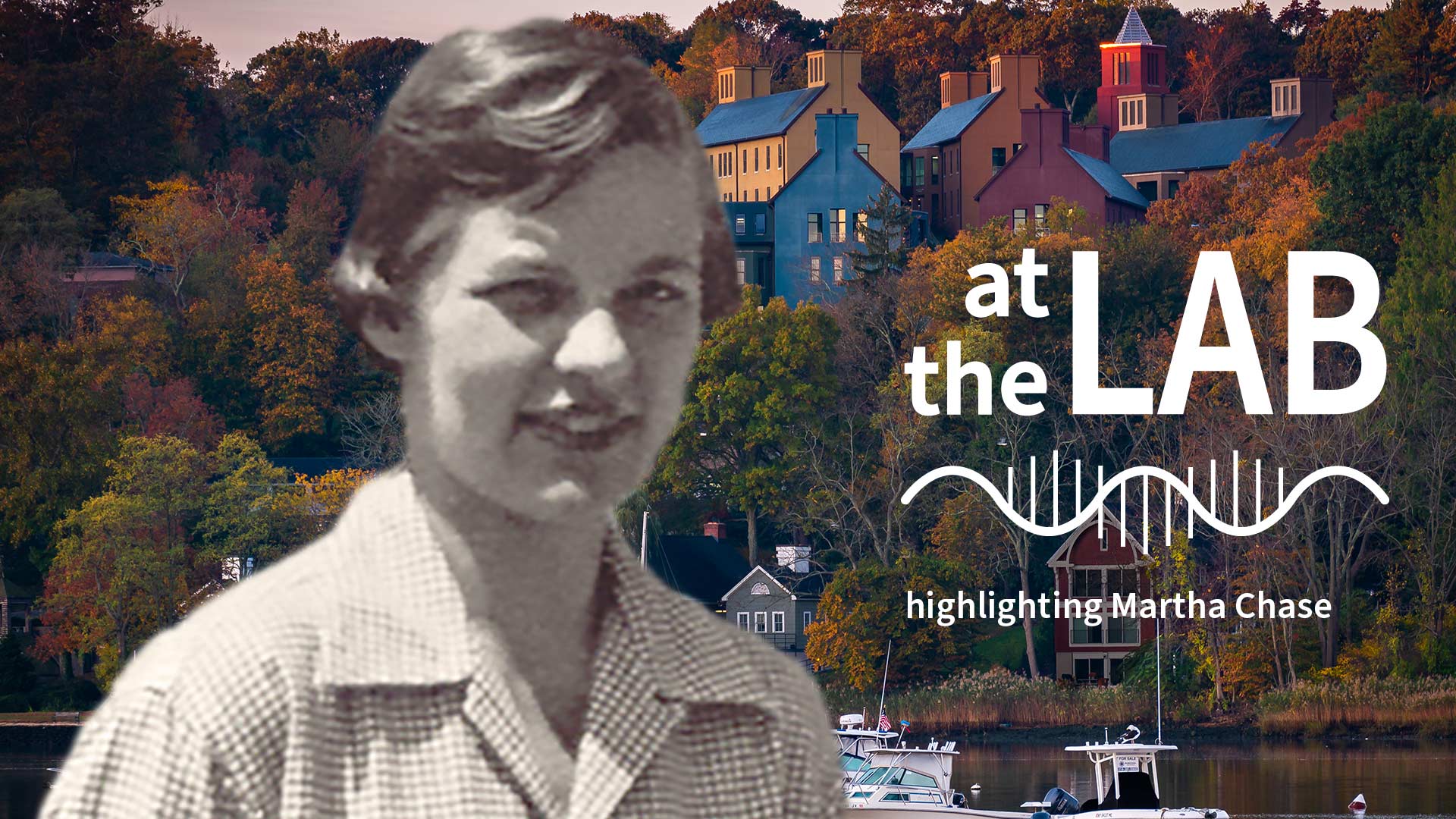This week At the Lab, we celebrate the life of Martha Chase, one of many diligent women who have been involved in groundbreaking research at CSHL. Hear about her famous work, the Hershey-Chase experiment, which confirmed a crucial fact about DNA using a common kitchen appliance. Can you guess what it is?
Read the related story: Blending history and science
Transcript
Sara Giarnieri: You’re now At the Lab with Cold Spring Harbor Laboratory. My name is Sara Giarnieri, and this week At the Lab, we’re celebrating women in STEM.
SG: Cold Spring Harbor Laboratory has been home to many brilliant women in science. Today, we are examining the life of one researcher under the microscope: Martha Cowles Chase.
SG: Chase was born on November 30th, 1927, in Cleveland, Ohio. After completing her bachelor’s degree in 1950, she became a research assistant at CSHL for Alfred Hershey. This led to one of the most famous experiments in history.
SG: The Hershey-Chase experiment was game-changing for the field of genetics. Using a mere kitchen blender, the pair confirmed that genes are made of DNA, not protein. This same blender is housed in the CSHL archives.
SG: Chase stayed with CSHL until 1953 and went on to conduct research at other institutions. Yet, she came back yearly to work with the “Phage Group,” which consisted of Alfred Hershey, Salvador Luria, and Max Delbrück.
SG: Meanwhile, Chase continued her education at the University of Southern California, receiving a Ph.D. in microbiology in 1964.
SG: In 1969, Alfred Hershey won the Nobel Prize for his team’s groundbreaking genetic discovery. Even though Chase was not acknowledged by the Nobel committee, she has been recognized for her work in other ways. A family of bacterial viruses called Chaseviridae was named in her honor.
SG: Chase passed in 2003 at the age of 75 from pneumonia, but she still lives on through the work of modern-day geneticists. Indeed, much of the research happening today at Cold Spring Harbor would be impossible were it not for women in science like Martha Chase.
SG: Thanks for listening to At the Lab. Please tune in next week and subscribe to get another fascinating story like this delivered each week. You can also find us online at cshl.edu and on all social media platforms. For Cold Spring Harbor Laboratory, I’m Sara Giarnieri, and I’ll see you next time At the Lab.
